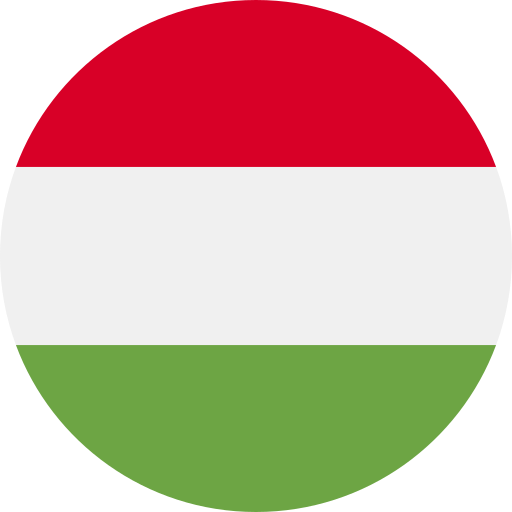Key Takeaways
- Uralic Language Family: Hungarian, Finnish, and Estonian belong to the Uralic family, sharing a common ancestry while displaying distinct cultural and linguistic traits.
- Unique Linguistic Features: Each language has its own grammatical structures; Hungarian uses an intricate case system with over 18 cases, Finnish employs 15 cases with vowel harmony, and Estonian features a simpler case system with around 14 cases.
- Historical Influences: The languages evolved under different historical contexts—Hungarian absorbed influences from Turkish and Slavic languages, while Finnish was shaped by Swedish rule and Estonian reflected Germanic and Slavic impacts.
- Phonetic Diversity: Hungarian is characterized by long vowels and diverse consonants, Finnish is known for its musical quality due to vowel harmony, whereas Estonian phonetics incorporate more Germanic elements.
- Cultural Significance: The unique cultures associated with each language influence their expressions in literature, music, traditions, and communal activities that enhance the learning experience.
- Vocabulary Distinctions: Vocabulary variations reflect historical interactions; for example, Hungarian includes many loanwords from neighboring languages like Turkish and Latin while Finnish integrates Swedish influences.
Ever wondered why Hungarian, Finnish, and Estonian sound so different yet share some intriguing similarities? These three languages belong to the Uralic family but are worlds apart in culture, history, and structure. If you’re curious about what sets them apart and how their unique traits reflect their origins, you’re in the right place.
Understanding the differences between Hungarian, Finnish, and Estonian can unlock a treasure trove of knowledge about these fascinating cultures. Whether you’re planning a trip or diving into language learning, knowing what makes each language tick will enhance your experience. Let’s explore how geography, history, and linguistic features shape these distinct yet interconnected languages.
Overview of Uralic Languages
Uralic languages belong to a diverse family, encompassing languages like Hungarian, Finnish, and Estonian. These languages share a common ancestry but exhibit distinct characteristics that set them apart.
Hungarian stands out due to its unique grammatical structure and vocabulary influenced by neighboring languages. Its agglutinative nature allows for complex word formation through prefixes and suffixes.
Finnish features a rich system of vowel harmony and extensive case endings, with 15 grammatical cases enriching its syntax. This language emphasizes rhythm and melody, which makes it musical in spoken form.
Estonian shares similarities with Finnish yet has significant influences from Germanic and Slavic languages. With a simpler case system than Finnish, Estonian maintains its own identity while still reflecting the broader Uralic roots.
Understanding these differences enhances your appreciation for how geography and history shape each language’s evolution. Each language not only represents communication tools but also carries cultural significance that enriches the learning experience.
Historical Background
Hungarian, Finnish, and Estonian languages share a fascinating historical background that shapes their unique identities. Understanding this history adds depth to your appreciation of each language’s nuances.
Origins of Hungarian
Hungarian, known as Magyar, traces its roots back to the Uralic language family. Its ancestors migrated from the Ural Mountains around 1,000 BC. Over centuries, it absorbed influences from various neighboring languages like Turkish, Slavic languages, and Latin due to Hungary’s geographical position in Central Europe. This interaction led to a rich vocabulary and distinct grammatical features that set Hungarian apart from other Uralic languages.
Origins of Finnish and Estonian
Finnish and Estonian also belong to the Finnic branch of the Uralic language family. The origins of these languages date back thousands of years when early Finno-Ugric peoples settled in what is now Finland and Estonia. Both languages evolved while maintaining close ties with one another; however, they diverged significantly under external influences. Finnish developed strong connections with Swedish due to centuries of rule by Sweden, while Estonian absorbed elements from Germanic and Slavic languages through trade and political interactions. These historical contexts shaped their current structures and vocabulary while retaining core features common among Uralic languages.
Understanding these origins provides valuable insight into how geography, migration patterns, and cultural exchanges have influenced not just linguistic development but also national identities in Hungary, Finland, and Estonia.
Linguistic Features
Hungarian, Finnish, and Estonian exhibit unique linguistic features that highlight their differences while showcasing their Uralic roots. Understanding these attributes enhances your appreciation of each language’s complexity.
Phonetic Differences
Phonetically, Hungarian stands out with its distinctive sounds, including the use of long vowels and a variety of consonants. This creates a rich auditory experience that sets it apart from both Finnish and Estonian. Finnish is known for its musical quality due to vowel harmony; this means vowels within words often harmonize to create a pleasing sound pattern. Estonian also embraces vowel harmony but incorporates more Germanic influences in its phonetics, leading to slight variations in pronunciation compared to Finnish.
Grammatical Structures
Grammatically, these languages utilize agglutinative structures where suffixes modify meanings significantly. Hungarian boasts an intricate case system with over 18 cases used to express various grammatical relationships. In contrast, Finnish employs 15 cases but integrates them into a melody-like syntax that flows smoothly in speech. Estonian simplifies this by using fewer cases—around 14—allowing for clearer sentence construction while maintaining essential grammatical functions.
Vocabulary Variations
Vocabulary showcases fascinating distinctions influenced by historical contexts and neighboring languages. Hungarian vocabulary contains numerous loanwords from Turkish, Slavic languages, and Latin due to centuries of interaction and cultural exchanges. Finnish vocabulary reflects Swedish influence along with indigenous terms that contribute to its unique character. Estonian has absorbed many words from Russian and Germanic languages as well, enriching its lexicon while retaining core Uralic elements.
These linguistic features provide insight into how geography and history have shaped the identities of Hungarian, Finnish, and Estonian speakers today.
Cultural Influences
Cultural influences play a significant role in shaping the languages and identities of Hungarian, Finnish, and Estonian speakers. Each culture reflects unique traditions, values, and historical experiences that contribute to the distinct characteristics of their respective languages.
Hungarian Culture
Hungarian culture is rich with history and tradition. The heritage includes folklore, music, dance, and cuisine. Traditional dishes like goulash showcase Hungary’s agricultural roots while reflecting influences from neighboring regions. The language itself carries a sense of national pride—expressing emotions through poetic expressions found in literature and folk songs. Celebrations such as Easter or Christmas often highlight communal activities tied to language use. Understanding these cultural elements enhances your appreciation for Hungarian.
Finnish and Estonian Cultures
Finnish culture emphasizes connection to nature, evident in its numerous festivals celebrating seasonal changes. Midsummer festivities feature bonfires and traditional music that resonate with community spirit. The sauna holds a special place in Finnish life; it’s not just about relaxation but also social bonding.
Estonian culture shares similarities with Finland but incorporates influences from Germanic traditions due to historical ties. Festivals like Jaanipäev (Midsummer) reflect both local customs and an appreciation for nature’s beauty. Music plays a crucial role across both cultures—choirs are prevalent in Estonia while Finland boasts its own vibrant music scene.
These cultural nuances enrich the understanding of how language connects people on deeper levels beyond mere vocabulary or grammar rules. Embracing these aspects can enhance your experience when learning or engaging with Hungarian, Finnish, or Estonian languages.
Conclusion
Exploring the differences between Hungarian, Finnish, and Estonian reveals a fascinating tapestry of language and culture. Each language carries its own unique characteristics shaped by history and geography. You’ll find that understanding these distinctions enhances your appreciation for each language’s beauty.
Whether you’re traveling through Hungary, Finland, or Estonia or diving into language learning, recognizing the rich cultural contexts behind these languages can deepen your experience. Embrace the journey of discovery as you explore how these languages reflect their people’s identities and histories.
Frequently Asked Questions
What are the Uralic languages?
Uralic languages are a family of languages that includes Hungarian, Finnish, and Estonian. They share a common ancestry but have evolved distinctly due to geographical, historical, and cultural influences.
How do Hungarian, Finnish, and Estonian differ linguistically?
Hungarian has complex grammar with over 18 cases and unique sounds. Finnish features 15 grammatical cases with vowel harmony, creating a melodic quality. Estonian has around 14 cases and is influenced by Germanic languages.
What role does culture play in these languages?
Culture deeply influences language through traditions, folklore, cuisine, and social practices. Each language reflects its speakers’ cultural identity, enhancing communication and fostering connections among people.
Why is understanding these languages important for travelers?
Knowing the differences among Hungarian, Finnish, and Estonian enhances travel experiences by providing insights into local customs and facilitating better interactions with native speakers.
How have history and geography shaped these languages?
Each language’s development was influenced by migration patterns and external factors. For example, Hungarian absorbed elements from Turkish and Slavic cultures due to Hungary’s central location in Europe.
What are some key phonetic features of these languages?
Hungarian features long vowels; Finnish is known for its musical vowel harmony; while Estonian incorporates slight variations in pronunciation influenced by Germanic roots. Each contributes to their unique sound profiles.
Are there any similarities between these three languages?
Despite their differences, all three belong to the Uralic family and share some grammatical structures. They also reflect similar themes related to nature due to their geographical backgrounds.







